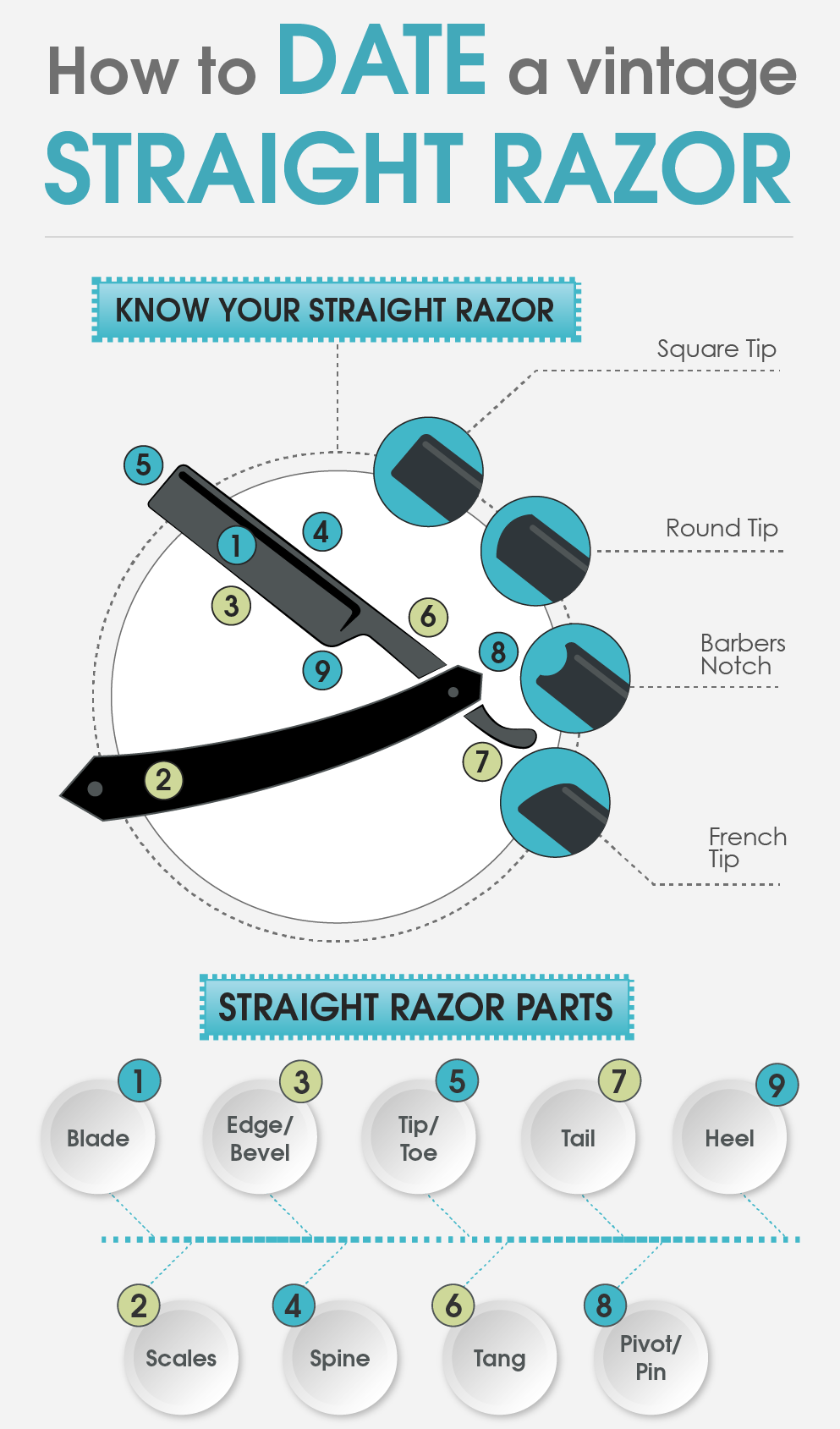
How to date a vintage Straight Razor
Text Version
As many things have evolved over the decades, so have the tools man has shaved with. Specifically, the designs of Straight Razors have changed quite drastically, and have become much more efficient than in “the beginning” …
In and before the 1800’s, the blade and handle started out as wedge, without a “tang” and often without the monkey tail. The scales (then referred to as the “handle”), were made of wood, horn, bone, ivory and tortoise…over the next 30 years, the straight razor advancements included, blades started to be “hollow ground”, a start of a “shoulder” appeared, the handles became slightly curved, flutting (AKA jimping) was first seen. But perhaps the coolest change, was the introduction of the “Monarch”. The Monarch was an identifying mark, kind of link putting your name on a paper. This Monarch included a few letters and symbols that identified exactly who’s razor it was. An example would be G (picture of a crown) R = This Monarch indicated this was King George lll’s razor.
1830-1880
Up to this point, Straight Razors were mainly made from “Cast Steel”. But that was now being replaced by Silver Steel (known as “the new steel”). Tang’s started to elongate. Barber notches, photo etchings, artwork on the spine, and Company Branding started showing the pride of these units.
1870-1900
As the straight razor continued to evolve, they were now mainly “hollow ground” , displacing the earlier “wedge” styles. Processes of “photo etching” on the blade face and scales became popular, manufactures now creating “works of art”, quite beautiful – appeasing this new found love of the straight razor.
1900-
Straight razors became so popular, that many Knife Manufactures added them to their product lines. Seemingly becoming a status symbol of fine art, many US manufactures lost out to the Europeans due to the beauty of design. Buyers felt the fancier, the better. As a side note: this is also about the time replaceable razors came onto the scene…


Comments
Leave a comment